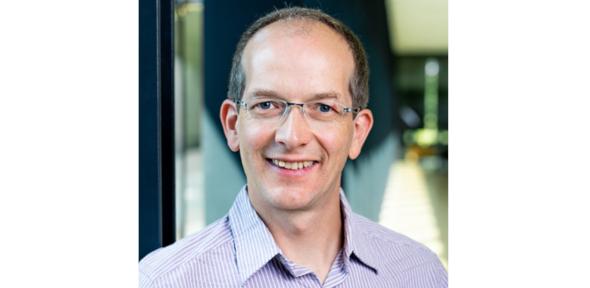
François Nédélec has joined the Sainsbury Laboratory Cambridge University (SLCU) to lead a research group studying cell morphogenesis and developmental biology using synthetic and systems biology approaches, and computer modelling.
Dr Nédélec brings with him a wealth of knowledge and experience in cell and developmental biology with a multidisciplinary background in mathematics, physics and biology, combining theoretical and experimental investigations to exploring cell biology dynamics.
He will establish a new research group at SLCU that will apply both physical and theoretical approaches to study the organisation of living cells, with an emphasis on the cytoskeleton.
Dr Nédélec has led the development of a number of bio-physical and quantitative analysis methods, including establishing cytosim, an Open Source simulation project. The cytosim platform enables the study of cytoskeletal systems from a mechanistic perspective, modelling the dynamics of networks involving microtubules or actin and associated proteins.
Dr Nédélec also has an interest in studying mitotic spindles, which are large cellular structures made for segregating the chromosomes during eukaryotic cell division. He previously studied mitotic spindle mechanics in a range of organisms (yeast cells and Xenopus) and will undertake further work using experimental and theoretical methods to analyse the organisation of spindles and other cytoskeletal structures in plants.
His long-term research objective is to understand physical principles associated with the organisation in living cells, and at a higher level for multiple cells interacting.
His next focus will be on looking at how plants overcome engineering problems when building their cells.
“I am interested in understanding the mechanical side of cell morphogenesis and how the cell shape confers advantageous mechanical properties,” Dr Nédélec said. “I want to look at how the cytoskeleton and cell wall interact as cells grow and divide, as well as exploring spindle and nuclear positions during cell development and replication.
“I am really excited to be joining SLCU, where I am establishing a team to continue research on the cytoskeleton, with an added focus on morphogenesis.
“Plant cells are surrounded by polymeric mesh called the cell wall, which dominates their mechanical properties. The cells themselves have turgor pressure and they push on the cell wall that constrains them, so there is always a lot of tension in plant tissues (this is why a fresh lettuce is crispy). But interestingly for us, cells use their cytoskeleton to direct the addition of new cell wall material. This is the perfect system to study how the cytoskeleton directs cell growth and cell division which together determine the shape of cells, and thus ultimately the shape of the whole plant.
“We are still a long way from being able to predict the shape of a plant organ, such as a flower, with this approach, but this is a stimulating aim that offers many valuable projects along the way.”
Dr Nédélec was most recently a visiting researcher at the Center for Interdisciplinary Research in Paris and prior to that he led a research group at EMBL between 2005 - 2017. He was also the co-founder of the EMBL mathematical modelling centre, which provided a training programme for biologists, seminars and help desk for researchers.
